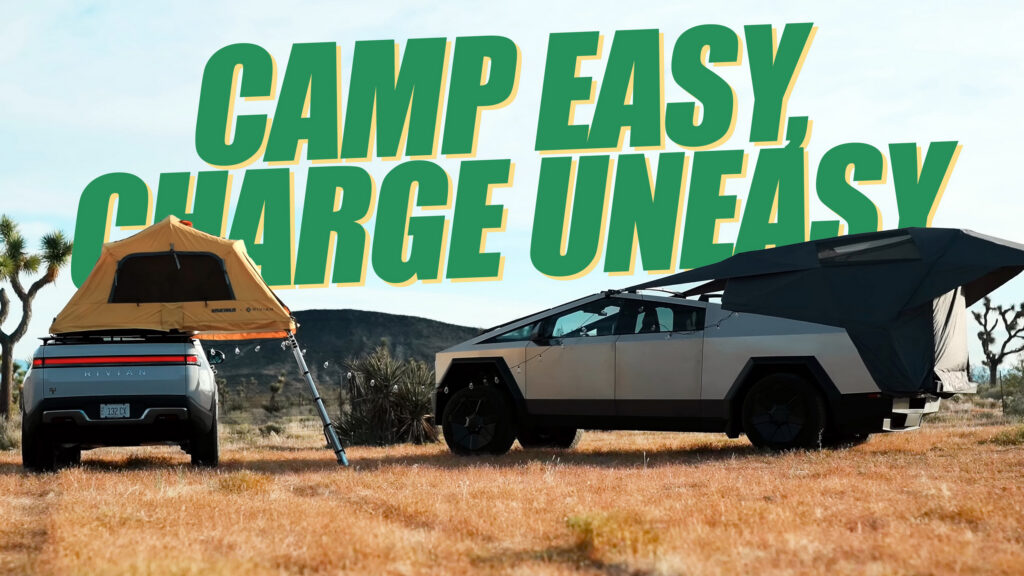- The Tesla Cybertruck and Rivian R1T both boast impressive camping features.
- Several of those features are on display in this real-world test from Top Gear.
- Each truck still faces one big problem and it has to do with charging infrastructure.
Modern trucks can do almost anything that the average driver could want. The Tesla Cybertruck and Rivian R1T are at the bleeding edge of EV truck technology. Camping accessories and features are a part of that tech and the folks at Top Gear just took them out for a real-world overnight test. What they found is that both are excellent except for one flaw that, truth be told, isn’t actually their own.
It’s one thing to see the camping setups for the Cybertruck and R1T and another thing to watch as people use them in practice. That’s the job for Jack Rix and Ollie Marriage of Top Gear though. Which of the two trucks you’ll prefer probably comes down to practicality.
More: Tesla Trucks Up Cybertruck With New Off-Road And CyberTent Modes
The process of setting up and taking down the integrated Cybertent in the Cybertruck is a complex one. The result of the process though is a very streamlined, practical, and aesthetically engaging living space. The tent folds out from the tonneau cover area, a support sits just above the main bed, and there are panels that enable users to see into the sky from inside the dwelling.
There’s even an integrated set of storage boxes that fit beneath the tent and in the bed. Of course, you’ll need to be willing to spend several thousand dollars to pick one up on top of the Cybertruck cost itself.
On the other hand, the tent on the Rivian is basically a standard roof-top tent from Yakima that simply fits the R1T seamlessly. It’s not exactly cheap at about $2,800. It does happen to fold out and back up in a flash though.
Both hosts enjoyed the experience for the most part and highlighted the benefit of having onboard electric power that they could tap into. Of course, that brings us to the real issue with each of these pickups. Every minute that one sits out in the wilderness tapping into the battery is another bit of overall range lost.
Unless there’s a charging station relatively close to one’s campsite, actually taking these trucks off-road could prove risky. Of course, that’s not the trucks’ fault, but rather the infrastructure’s and the number of chargers that are available. Thus, when you’re planning your next camping trip, it would be wise to take this into serious consideration.








